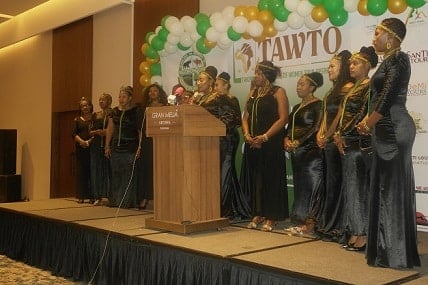The monthly Hawaii Hotel Performance Report published by the Hawaii Tourism Authority shows the severe and continued effect of the coronavirus on hotels specifically and on tourism in general.
1. All classes of Hawaii hotel properties statewide from luxury to midscale to economy reported RevPAR losses in January compared to a year ago.
2. During January, most passengers arriving from out-of-state and traveling inter-county could bypass the State’s mandatory 10-day self-quarantine with a valid negative COVID-19 NAAT test.
3. Kauai initially temporarily suspended its participation in the state’s Safe Travels program in December 2020, however, starting January 5, it rejoined for inter-island arrivals.
Hawaii hotels statewide reported continued declines in revenue per available room (RevPAR), average daily rate (ADR), and occupancy for January 2021 as compared to January 2020 as tourism continued to be impacted significantly by the COVID-19 pandemic.
According to the Hawaii Hotel Performance Report published by the Hawaii Tourism Authority’s (HTA) Research Division, statewide RevPAR decreased to $58 (-77.8%), ADR fell to $251 (-20.2%), and occupancy declined to 23.3 percent (-60.2 percentage points) in January 2021. The report’s findings utilized data compiled by STR, Inc., which conducts the largest and most comprehensive survey of hotel properties in the Hawaiian Islands. For January, the survey included 145 properties representing 42,614 rooms, or 80.2 percent of all lodging properties and 85.5 percent of operating lodging properties with 20 rooms or more in the Hawaiian Islands, including full service, limited service, and condominium hotels. Vacation rental properties were not included in this survey.
During January, most passengers arriving from out-of-state and traveling inter-county could bypass the State’s mandatory 10-day self-quarantine with a valid negative COVID-19 NAAT test result from a Trusted Testing Partner through the state’s Safe Travels program. All trans-Pacific travelers participating in the pre-travel testing program were required to have a negative test result before their departure to Hawaii. On December 2, Kauai County temporarily suspended its participation in the state’s Safe Travels program, making it mandatory for all travelers to Kauai to quarantine upon arrival. However, starting January 5, Kauai County rejoined the Safe Travels program for inter-island arrivals, allowing inter-island travelers who have been in Hawaii for more than three days to bypass the quarantine with a valid test result. Also starting January 5 on Kauai, trans-Pacific travelers were given the option of participating in a pre- and post-travel testing program at a “resort bubble” property as a way to shorten their time in quarantine. The counties of Hawaii, Maui and Kalawao (Molokai) also had a partial quarantine in place in January.
Hawaii hotel room revenues statewide fell to $90.4 million (-79.5%) in January. Room demand was 359,700 room nights (-74.4%) and room supply was 1.5 million room nights (-8.0%). Many properties closed or reduced operations starting in April 2020. If occupancy for January 2021 was calculated based on the pre-pandemic room supply from January 2019, occupancy would be 21.5 percent for the month (Figure 5).
All classes of Hawaii hotel properties statewide reported RevPAR losses in January compared to a year ago. Luxury Class properties earned RevPAR of $135 (-72.6%), with higher ADR at $788 (+22.3%) counterbalanced by an occupancy of 17.1 percent (-59.4 percentage points). Midscale & Economy Class properties earned RevPAR of $52 (-71.0%) with ADR at $167 (-20.2%) and occupancy of 31.3 percent (-54.8 percentage points).
All of Hawaii’s four island counties reported lower RevPAR, ADR and occupancy compared to a year ago. Maui County hotels led the counties in January RevPAR of $99 (-73.2%), with ADR at $451 (-5.8%) and occupancy of 21.9 percent (-55.1 percentage points). Maui County’s January supply was 392,900 room nights (-0.3%). Maui’s luxury resort region of Wailea had RevPAR of $153 (-75.0%), with ADR at $807 (+12.5%) and occupancy of 18.9 percent (-66.3 percentage points). The Lahaina/Kaanapali/Kapalua region had RevPAR of $69 (-77.3%), ADR at $367 (-7.4%) and occupancy of 18.7 percent (-57.6 percentage points).
Oahu hotels earned RevPAR of $40 (-82.0%) in January, with ADR at $168 (-33.7%) and occupancy of 23.6 percent (-63.6 percentage points). Oahu’s January supply was 844,900 room nights (-11.0%). Waikiki hotels earned $36 (-83.4%) in RevPAR with ADR at $164 (-34.2%) and occupancy of 21.9 percent (-64.9 percentage points).
Hotels on the island of Hawaii reported RevPAR of $72 (-71.9%), with ADR at $268 (-14.1%) and occupancy of 26.9 percent (-55.4 percentage points). The island of Hawaii’s January supply was 207,300 room nights, which was practically unchanged from last year. Kohala Coast hotels earned RevPAR of $109 (-71.7%), ADR at $442 (-7.7%) and occupancy of 24.6 percent (-55.6 percentage points).
Kauai hotels earned RevPAR of $31 (-87.9%), with ADR at $168 (-48.5%) and occupancy of 18.4 percent (-60.1 percentage points). Kauai’s January supply was 100,600 room nights, 22.9 percent lower than last January.
Tables of hotel performance statistics, including data presented in the report are available for viewing online at: https://www.hawaiitourismauthority.org/research/infrastructure-research/




